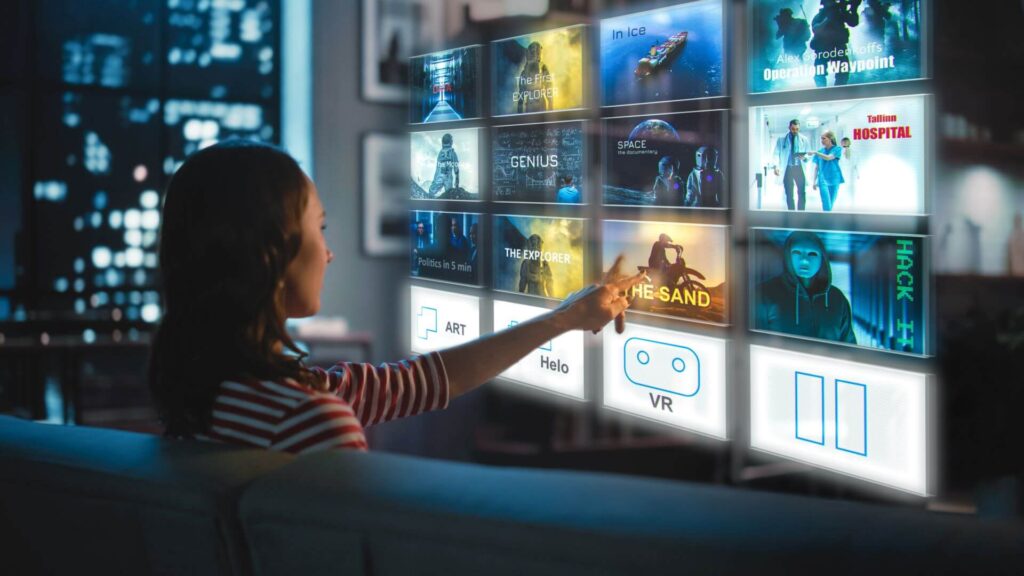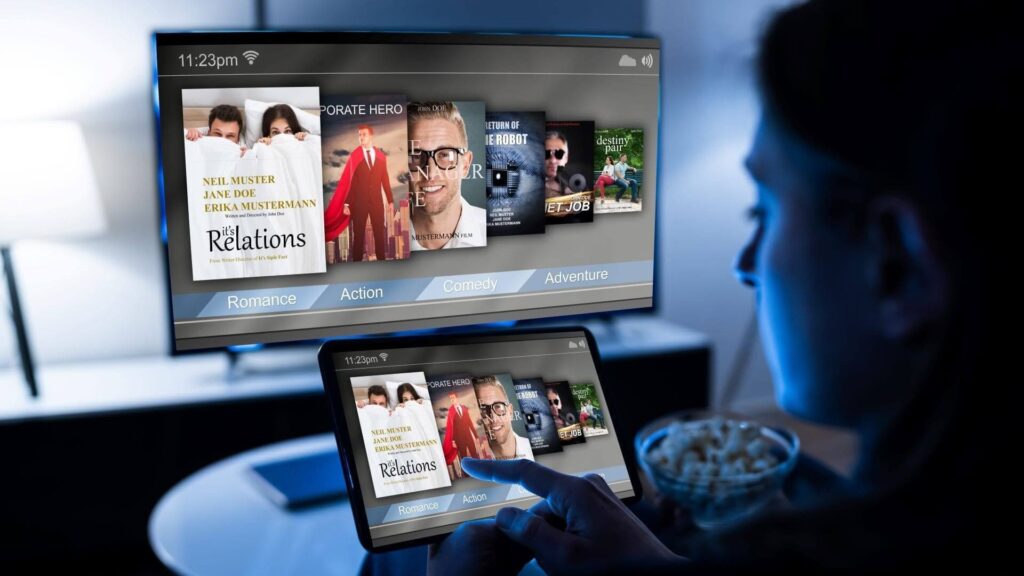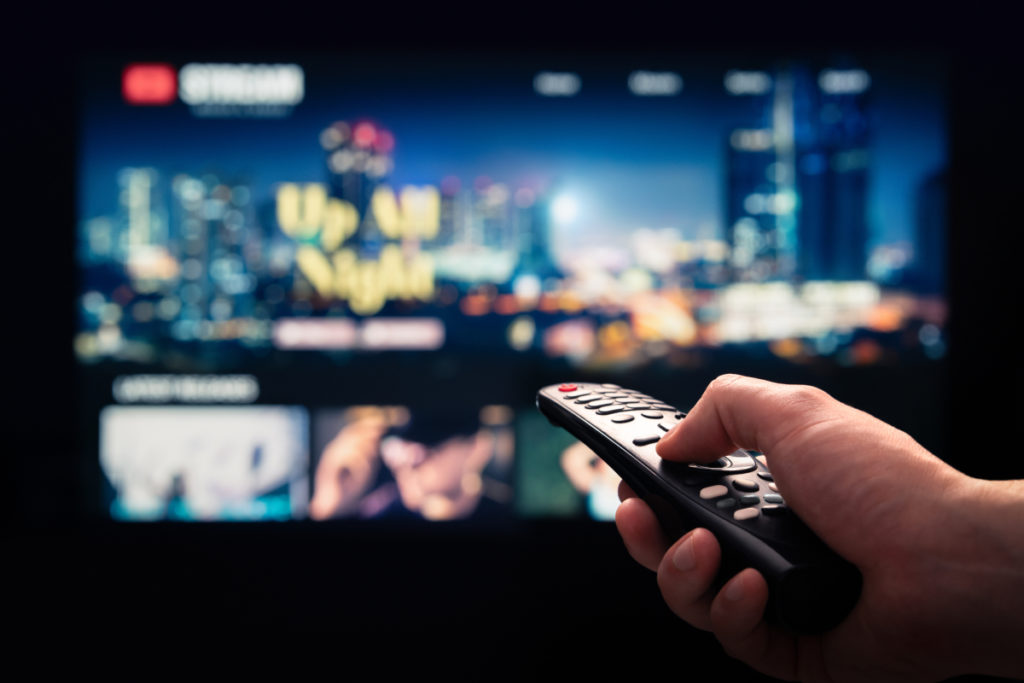Video streaming services – all you need to know from a tech standpoint
Nowadays, video streaming services are everywhere. We have all heard of entertainment platforms such as Netflix, HBO Max, Amazon Prime Video or Apple TV+. What’s more, we use them almost every day. Yet, understanding how they work is far less common.
VOD, OTT, set-top-boxes, live-streaming – it is important to become acquainted with these terms in order to understand the intricacies of the streaming media industry. Furthermore, for business owners or content creators, understanding these issues can contribute to a better return on investment in this area. To shed light on the topic we’ll start from the beginning and bring you up to speed with the world of video streaming services.
The basics of how video streaming services work
Streaming itself is a process of transmitting or receiving multimedia data throughout a network in the form of a constant, uninterrupted flow. Therefore, the solutions we all know as streaming services deliver content to viewers by their connection to the internet through the device of choice. Most of them are subscription-based, with a regularly occurring fee for the service.
What about streaming hardware?
Nowadays, most TVs already have the functionality needed for streaming built into the devices. However, it is also possible to connect to streaming services with any up-to-date hardware such as Android and Apple devices – phones, tablets and laptop consoles or even set-top-boxes which make your regular TV smart.
The market landscape of streaming service providers
It can be hard to keep up with emerging streaming service solutions. The ever-growing industry surprises us with better and more advanced options every day. So, leaders who compete for the highest market coverage use the ones that stand out and offer the most promising features. Often designed with enormous budgets at hand, the technologies are frequently backed by the most powerful tech companies.
Here’s the list of the most prominent and well-known video streaming services in the industry:
- Netflix
- Amazon Prime Video
- HBO Max
- Apple TV+
- Disney Plus
- Hulu
- ESPN+
Video streaming services – data usage
The rule goes that the higher the video streaming quality, the more data is consumed in the process, especially with the 4K formats now broadly available across platforms. With the addition of greater audio clarity, the audience should opt for unlimited internet plans, otherwise, their bills will skyrocket.
Set-top-boxes as the path to the new era of streaming
The term set-top-box originally referred to the small devices that were given to viewers by the TV cable provider as an addition to the traditional tools used for signal playback. Today it has lost its previous meaning and now refers to providing access to video streaming services even on an older device without that option built into the hardware.
The meaning of VOD
Video-on-demand, as the name suggests, refers to allowing viewers to access content whenever they please. Both the pre-recorded materials as well as the ones distributed live can be compressed, stored and made available to the audience. The inquiry is sent to the Content Delivery Network, and after access is granted based on the correct certification, viewers can enjoy the content that they have chosen.
A few words on live streaming
We are talking about live streaming in a situation when the content is delivered through the internet in real-time without being pre-recorded or previously stored. After the stream has ended, the viewers can usually still access it for a short or defined period of time (e.g., 24 hours on Snapchat). However, the full material can also be made available for longer, for example on platforms such as Twitch or YouTube, where creators can manage it accordingly to their preferences.
What to know about low latency streaming?
As enticing as live streaming sounds, it’s not technically live but as close as we can physically get to it. Obviously, due to transmission processes, there will be some delay in the playback. There is always a choice between the possible quality of the material and its latency. The popular HLS streaming protocol is 30-45 seconds behind real-time, just because it prioritises quality, which is considered “normal” in live video streaming. Of course, what counts as low latency is very subjective, but for reference, it’s worth mentioning that HD cable TV content is only 5 seconds behind live.
What is OTT?
The acronym stands for over-the-top and refers to any video streaming services that provide access to published materials through an internet connection. In its original meaning, the word “over” suggested reaching further than traditional cable broadcasting and omitting the subscription commitment tied to cable service. Some well-known examples of such services are Netflix and Hulu.
VOD vs OTT – what’s the difference?
Although similar, the terms video-on-demand and over-the-top services carry slightly different meanings. It can be confusing, but the two terms should not be used as alternatives.
VOD is a broader topic than OTT which is a subset of it. A subset of VOD called “cable-supported VOD” is the traditional way, and originally required you to have a cable subscription to access the streaming services. A true OTT service relies only on the internet connection and does not require any additional cable subscription.
To sum up, VOD services can be used:
- Through a Smart TV with a pre-installed app or by download from an app store
- Through a set-top-box
- The old-fashioned way – a laptop connected to your TV through an HDMI cable
- Simply with other tools such as smartphones, tablets, PCs etc.
We hope that we have given you a little insight into the technical side of video streaming services. If you want to find out more about how you can use streaming for your business, feel free to contact our experts via the offering page.
About the author
Our blog





